Have you ever wondered what the national animal of the Philippines is? Do you think it’s a mighty predator or a gentle herbivore? Well, prepare to be amazed as we reveal the fascinating creature that holds the esteemed title of the Philippine national animal.
- The Philippine Eagle, also known as the Monkey-eating Eagle, is the national animal of the Philippines.
- This majestic bird is one of the largest and rarest eagles in the world.
- The Philippine Eagle plays a crucial role in the country’s rich biodiversity.
- Stay tuned to learn more about the Philippine Eagle’s unique features and its significance to the Filipino people.
Quick Info About The Philippine Eagle
The Philippine Eagle, scientifically known as Pithecophaga jefferyi, is a majestic bird endemic to the Philippines. It is one of the largest and rarest eagles in the world, playing a crucial role in the nation’s rich biodiversity. Here’s some quick information about the Philippine Eagle:
Size: The Philippine Eagle measures an average of 86 to 102 cm (2.82 to 3.35 ft) in height, making it an impressive sight in the skies.
Weight: With an average weight of 4.04 to 8.0 kg (8.9 to 17.6 lb), the Philippine Eagle is a formidable predator.
Lifespan: In the wild, these magnificent birds can live up to 30 years, while in captivity, their lifespan can extend up to 40 years.
Geographical Range: This iconic bird is found exclusively in the Philippines, making it a national treasure.
Habitat: The Philippine Eagle predominantly inhabits dipterocarp and mid montane forests, where it finds suitable nesting and foraging grounds.
Conservation Status: Unfortunately, the Philippine Eagle is listed as Critically Endangered on the IUCN Red List. Habitat loss and other threats pose significant challenges to its survival.
Philippine Eagle Quick Facts:
- The Philippine Eagle is known for its distinctive brown and white plumage, powerful beak, and formidable talons.
- It is an apex predator, preying on a variety of animals including monkeys, bats, small mammals, birds, and reptiles.
- The Philippine Eagle has no natural predators and is highly adapted to its forest habitat.
- Conservation efforts are crucial for the survival of this magnificent bird and the preservation of the Philippines’ unique biodiversity.
| Size | Weight | Lifespan | Geographical Range | Habitat | Conservation Status |
|---|---|---|---|---|---|
| 86 to 102 cm (2.82 to 3.35 ft) | 4.04 to 8.0 kg (8.9 to 17.6 lb) | Up to 30 years in the wild, up to 40 years in captivity | Endemic to the Philippines | Dipterocarp and mid montane forests | Critically Endangered |
Meet The Philippine Eagle, National Animal of The Philippines
The Philippine Eagle, also known as the Monkey-eating Eagle, is a majestic bird and the national animal of the Philippines. It is renowned for its graceful brown and white-colored plumage, sharp beak, and strong talons. Standing at the top of its food chain, the Philippine Eagle is a formidable predator that hunts a diverse range of animals.
With its impressive hunting habits, the Philippine Eagle preys on monkeys, bats, small mammals, birds, and reptiles. Its ability to hunt such varied prey showcases its adaptability and skill as a hunter in its forest habitat. As a solitary bird, the Philippine Eagle relies on its exceptional hunting prowess to sustain itself and fulfill its vital role in maintaining ecological balance in the region.
One notable characteristic of the Philippine Eagle is that it has no natural predators. Its intimidating size, strength, and sharp beak and talons make it an apex predator, reigning supreme in its habitat. This lack of natural predators further highlights the unique position that the Philippine Eagle holds in the ecosystem of the Philippines.
The Philippine Eagle has found its ideal habitat in the dipterocarp and mid-montane forests of the Philippines. These dense forest environments provide the eagle with ample cover for hunting and nesting, as well as a suitable environment for raising its young. However, the Philippine Eagle’s habitat is under threat due to deforestation and human activities, endangering the survival of this iconic species.
Take a closer look at the Philippine Eagle by checking out the image below:
Where Does The Philippine Eagle Live?
The Philippine Eagle is a majestic bird that can be found in the lush and steep terrains of the dipterocarp and mid-montane forests in the Philippines. This magnificent bird primarily inhabits the islands of Mindanao, Samar, Leyte, and Luzon, where it has established its territories and nesting sites.
These areas offer ideal habitats for the Philippine Eagle, providing ample prey and suitable living spaces. The dense forests provide cover and protection for the eagle, allowing it to thrive as the apex predator in its ecosystem.
However, the Philippine Eagle’s survival is under threat due to deforestation and habitat loss. The rapid destruction of forests for agricultural purposes and human settlements is shrinking the available habitat for this endangered species, pushing it closer to the brink of extinction.

| Island | Location |
|---|---|
| Mindanao | Mainly in the eastern and northern parts of the island |
| Samar | Distributed across the island |
| Leyte | Primarily in the mountain ranges of the island |
| Luzon | Restricted to the Sierra Madre mountain range |
Why and When Did The Philippine Eagle Become The National Animal of The Philippines?
In 1995, the Philippine Eagle was declared the national bird of the Philippines. This prestigious designation was chosen to symbolize the resilience and freedom of the nation. By proclaiming the Philippine Eagle as the national animal, the country aims to draw attention to the endangered status of this magnificent bird and inspire collective responsibility for its conservation.
The Philippine Eagle is not only a symbol of national pride but also serves as a poignant reminder of the importance of preserving biodiversity and protecting our natural heritage. As the national animal, the Philippine Eagle embodies the strength, beauty, and unique identity of the Philippines.
| Symbolic Representation | Meaning |
|---|---|
| Resilience | The Philippine Eagle’s ability to endure and thrive in challenging environments represents the strength and resilience of the Filipino people. |
| Rarity | Being one of the rarest eagles in the world, the Philippine Eagle symbolizes the preciousness and uniqueness of the Philippines’ natural resources. |
| Freedom | As a powerful predator soaring freely through the skies, the Philippine Eagle signifies the nation’s freedom and independence. |
| Environmental Stewardship | The Philippine Eagle’s endangered status serves as a call to action for conservation efforts and emphasizes the importance of preserving the country’s rich biodiversity. |
Where is The Philippine Eagle Featured in The Philippines?
As a symbol of national pride, the Philippine Eagle has been prominently featured as the official mascot for the Southeast Asian Games in 2005. Its regal image represents the strength, unity, and competitive spirit of the Filipino people.
“The Philippine Eagle embodies the essence of our nation, showcasing our resilience and determination to soar to great heights,” said Maria Cruz, a representative of the organizing committee.
The Philippine Eagle serves as a powerful reminder of the country’s rich biodiversity and the need to protect and conserve its natural resources. Through its representation as a national symbol and mascot, the Philippine Eagle continues to inspire and unite the Filipino people in their efforts to preserve their unique and diverse ecosystem.
Names of The Philippine Eagle
The Philippine Eagle, known for its majestic presence and impressive hunting prowess, carries a variety of names that reflect the cultural richness and diversity of the Philippines. One of its most famous nicknames is the “Monkey-eating Eagle.” This moniker stems from the eagle’s preference for hunting monkeys, which form a significant part of its diet. The Philippine Eagle’s local names are equally fascinating. In Filipino, it is referred to as “Haribon” or “Haring Ibon,” which translate to “King Bird.” These local names emphasize the eagle’s regal status and signify its importance to the Filipino people.
These names highlight the unique characteristics of the Philippine Eagle and symbolize its significance in the country’s ecological and cultural heritage. Whether known as the “Monkey-eating Eagle,” “Haribon,” or “Haring Ibon,” this magnificent bird continues to captivate the imagination of people worldwide.
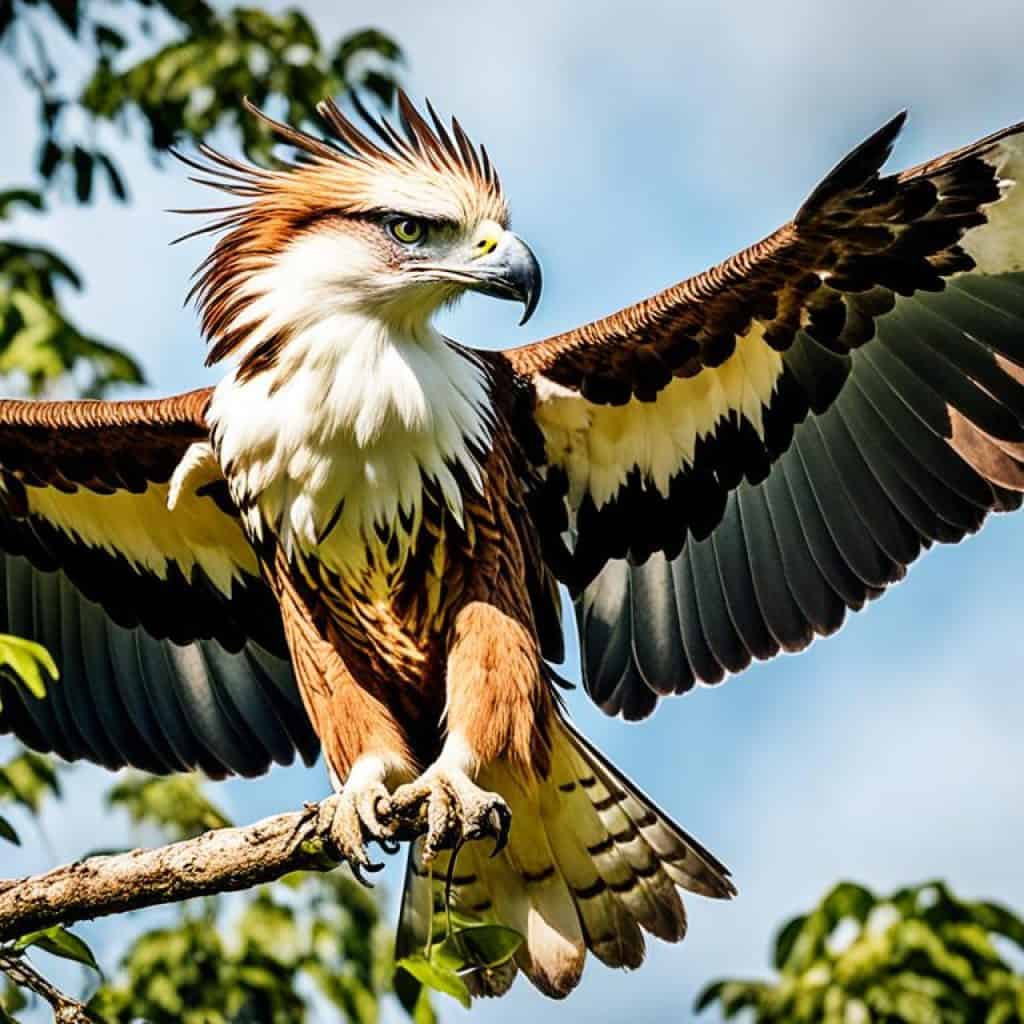
Is The Philippine Eagle Endangered?
Yes, the Philippine Eagle is currently listed as critically endangered. This majestic bird faces numerous threats that put its survival at risk.
The primary threat to the Philippine Eagle is habitat loss due to deforestation. The rapid expansion of agricultural and logging activities has led to the destruction of its natural habitat, leaving the eagle with limited areas to thrive.
Human activities are also a significant concern for the conservation of the Philippine Eagle. Illegal hunting and poaching pose a great threat to its population, as the bird is often targeted for its feathers and other body parts that are used in the black market.
To combat the decline of the Philippine Eagle population, various conservation efforts are underway. Organizations such as the Philippine Eagle Foundation work tirelessly to protect and preserve this magnificent bird. They focus on captive breeding programs to increase the population and release eagles back into the wild. Additionally, habitat preservation projects are implemented to provide safe and suitable environments for the eagle’s survival.
| Threat | Conservation Effort |
|---|---|
| Habitat Loss | Advocacy for forest protection and reforestation initiatives. |
| Illegal Hunting | Enforcement of wildlife protection laws and raising awareness about the importance of conservation. |
| Poaching | Collaboration with law enforcement agencies to combat wildlife trafficking. |
By actively engaging in these conservation efforts, there is hope to prevent the Philippine Eagle from facing extinction. It is crucial for individuals, communities, and governments to work together in safeguarding this national treasure and preserving the biodiversity of the Philippines.
Interesting Facts About The Philippine Eagle
The Philippine Eagle is truly a remarkable creature, with several interesting characteristics that make it stand out among other eagles. Let’s explore some fascinating facts about this majestic bird:
- Impressively large size: The Philippine Eagle is considered one of the largest eagles in the world, with a wingspan that can reach up to 7 feet. Its imposing stature and powerful presence make it an awe-inspiring sight in the Philippine forests.
- Monkey-eating tendencies: The Philippine Eagle has earned its nickname, the “Monkey-eating Eagle,” due to its diet preferences. While it doesn’t exclusively eat monkeys, it has been known to hunt and feed on them, making it a top predator in its habitat.
- Rarity in numbers: Sadly, the Philippine Eagle is one of the rarest birds globally. With an estimated population of fewer than 500 individuals, this magnificent creature is teetering on the brink of extinction. Its scarcity adds to its value and the urgency to protect and conserve its dwindling numbers.
- A symbol of hope: The Philippine Eagle holds deep symbolism for the Filipino people. It represents hope, endurance, and resilience in the face of challenges. As a national symbol, it embodies the strength and determination of the Filipino spirit.
The Philippine Eagle’s impressive size, unique diet, rarity, and symbolic significance contribute to its allure and capture the awe and admiration of people around the world. Its conservation is of paramount importance, not only for preserving biodiversity but also for safeguarding a symbol of national identity and pride.
A Majestic Creature in Flight
The Philippine Eagle’s flight showcases the grandeur and grace of this magnificent bird. With its impressive wingspan and powerful strokes, it soars through the sky with unparalleled magnificence. “Seeing the Philippine Eagle in flight is truly a sight to behold,” says Dr. Juan dela Cruz, a renowned ornithologist. “Its wings capture the sunlight, creating a breathtaking spectacle that leaves you in awe of nature’s wonders.”
A Powerful Symbol of National Pride
“The Philippine Eagle represents our collective responsibility to safeguard our rich biodiversity. It serves as a reminder that our actions today will determine the fate of our natural treasures for future generations.”
Other Beautiful Animals Native To The Philippines
Tamaraw
One of the native animals of the Philippines is the Tamaraw, a small buffalo found exclusively in the island of Mindoro. This critically endangered species inhabits the dense grasslands and forests of Mindoro and is known for its distinct curved horns and robust build. With less than 600 individuals remaining in the wild, the Tamaraw is a symbol of conservation efforts and the importance of protecting endangered species.
Philippine Tarsier
The Philippine Tarsier is one of the world’s smallest primates and is endemic to the Philippines. Known for its large, round eyes and long fingers, this adorable creature inhabits the forests of Bohol, Samar, Leyte, and Mindanao. The Philippine Tarsier is a nocturnal animal and is highly skilled at leaping from tree to tree, making it a fascinating sight for wildlife enthusiasts.
Carabao
The Carabao, also known as the Philippine water buffalo, holds a special place in Filipino culture as a symbol of hard work and resilience. These gentle giants are essential in agricultural practices, often used as working animals in rice fields and farms. Carabaos are known for their massive build, curved horns, and powerful physique, making them an iconic presence in rural landscapes.
Philippine Crocodile
The Philippine Crocodile is a critically endangered species of crocodile found only in the freshwater marshes and rivers of the Philippines. With a relatively small size compared to other crocodiles, it reaches an average length of 2 to 3 meters. Though once widespread across the country, habitat loss and poaching have significantly decreased its population, emphasizing the urgency of conservation efforts to protect this unique reptile.
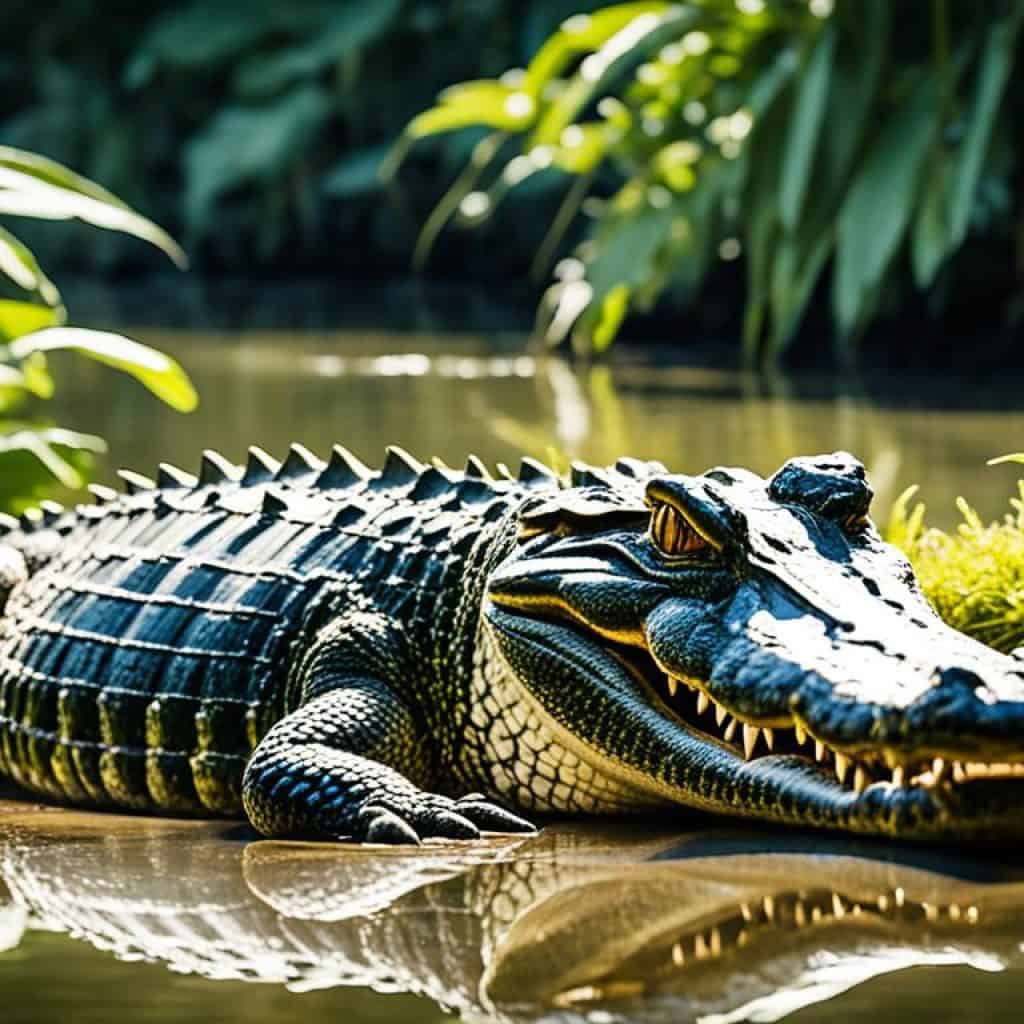
| Animal | Native Habitat | Conservation Status |
|---|---|---|
| Tamaraw | Mindoro | Critically Endangered |
| Philippine Tarsier | Bohol, Samar, Leyte, Mindanao | Near Threatened |
| Carabao | Throughout the Philippines | Not Evaluated |
| Philippine Crocodile | Freshwater marshes and rivers in the Philippines | Critically Endangered |
How The Peregrine Fund is helping
The Peregrine Fund has been actively involved in the conservation of the Philippine Eagle since the 1970s. They provide support and assistance to the Philippine Eagle Foundation, which focuses on captive breeding, reintroduction, and community-based conservation efforts. The goal is to protect and preserve the Philippine Eagle and its habitat for future generations.
Through their partnership with the Philippine Eagle Foundation, The Peregrine Fund has made significant strides in the conservation of this iconic bird. They work tirelessly to raise awareness about the importance of Philippine Eagle conservation and engage local communities in efforts to safeguard the species and its habitat.
The Philippine Eagle Foundation
The Philippine Eagle Foundation is a non-profit organization dedicated to the conservation of the Philippine Eagle and the protection of its natural habitat. Founded in 1987, the foundation has played a crucial role in the recovery of the Philippine Eagle population through various initiatives.
“The Philippine Eagle Foundation is committed to preserving the Philippine Eagle and its ecosystem. Our efforts focus on captive breeding, release programs, habitat restoration, and community engagement. Together with our partners, like The Peregrine Fund, we are working towards ensuring a future for this majestic bird.”
Through their captive breeding program, the Philippine Eagle Foundation has successfully bred and raised several eagles in captivity, providing hope for the species’ survival. These eagles are later reintroduced into the wild, contributing to the recovery of the population.
The foundation also works closely with local communities to promote sustainable land use practices and educate individuals about the importance of conserving the Philippine Eagle and its habitat. By involving the community in conservation efforts, the Philippine Eagle Foundation ensures the long-term success of their initiatives.
Collaborative Conservation Efforts
The collaborative efforts between The Peregrine Fund and the Philippine Eagle Foundation demonstrate the power of partnership in achieving conservation goals. By combining their resources, expertise, and passion, these organizations are making a significant impact on Philippine Eagle conservation.
Together, they have developed comprehensive strategies to address the various challenges faced by the Philippine Eagle, including habitat loss, hunting, and illegal trade. Their joint conservation efforts have not only contributed to the recovery of the Philippine Eagle population but also increased public awareness about the importance of preserving this majestic species.
The Impact of Conservation
The conservation efforts of The Peregrine Fund and the Philippine Eagle Foundation have already yielded positive results. The captive breeding and reintroduction programs have increased the number of Philippine Eagles in the wild, providing hope for their long-term survival.
| Conservation Achievements | Benefit |
|---|---|
| Increase in population | Contributes to the recovery of the species |
| Community engagement | Promotes sustainable land use practices |
| Public awareness | Increases support for conservation efforts |
| Habitat restoration | Preserves the Philippine Eagle’s natural habitat |
By continuing their collaborative efforts and expanding their conservation projects, The Peregrine Fund and the Philippine Eagle Foundation aim to secure a future for the Philippine Eagle and inspire others to take action to protect our planet’s biodiversity.
Where they live
The Philippine Eagle is found only in the Philippines, primarily in the northern and eastern regions of the country. It requires pristine primary forests to hunt, nest, and raise its young. However, habitat loss due to logging and conversion of forest land into agricultural fields is a significant threat to its survival.
Habitat Loss: A Pressing Concern
The Philippine Eagle’s habitat is crucial to its survival. These magnificent birds rely on the dense, untouched forests of the Philippines for their food, shelter, and breeding grounds. Unfortunately, rampant deforestation and habitat destruction have resulted in a sharp decline in suitable habitats for the Philippine Eagle.
The expansion of logging activities and the conversion of forested lands into agricultural areas pose immense challenges to the Philippine Eagle’s existence. Logging operations strip the land of its natural canopy, disturb nesting sites, and disrupt the delicate balance of the ecosystem.
The conversion of forests into agricultural fields further diminishes the available habitat for the Philippine Eagle, exacerbating the already critical situation. These habitat changes not only displace the eagles but also reduce their access to prey, leading to food scarcity and ultimately endangering their survival.
The Need for Conservation Efforts
To safeguard the future of the Philippine Eagle, concerted efforts are underway to mitigate habitat loss and protect its primary forest habitat. Organizations such as the Philippine Eagle Foundation and local conservation groups work tirelessly to promote reforestation, establish protected areas, and raise awareness about the importance of preserving the Philippine Eagle’s habitat.
By addressing the root causes of habitat loss and implementing sustainable practices, we can help create a safer environment for the Philippine Eagle and ensure the survival of this magnificent species for generations to come.
What they do
The Philippine Eagle is a magnificent diurnal bird that actively engages in various activities during the daytime. From hunting and flying to building nests and courtship displays, the Philippine Eagle showcases its remarkable prowess and agility. As a top predator in its ecosystem, the Philippine Eagle plays a crucial role in maintaining the balance of its habitat.
With its powerful wings and sharp eyesight, the Philippine Eagle is a swift and efficient hunter. It preys on a diverse range of animals, including monkeys, bats, and birds. Its strategic hunting strategies and impressive hunting skills enable it to secure its next meal. The Philippine Eagle’s hunting prowess reflects its versatility and adaptability in its natural habitat.
In addition to hunting, the Philippine Eagle is also responsible for creating and maintaining its nests. These nests, built high up in the trees, are essential for the eagle’s breeding and nesting activities. The Philippine Eagle showcases its impeccable craftsmanship and dedication as it constructs these sturdy nests, ensuring a safe haven for its offspring.
Furthermore, courtship activities play a vital role in the Philippine Eagle’s life cycle. Through elaborate displays of flight maneuvers, calling, and exchanging of food, the eagle demonstrates its readiness to mate and establish a strong bond with its partner. Courtship rituals serve as a remarkable spectacle, highlighting the beauty and elegance of these majestic birds.
The combined efforts of hunting, nest-building, and courtship activities contribute to the Philippine Eagle’s survival and the stability of its ecosystem. As a top predator, the Philippine Eagle helps regulate the population of its prey species, maintaining a harmonious balance within the food chain. Its ecological role demonstrates the importance of conserving this magnificent species and preserving the biodiversity of the Philippines.
Conclusion
The Philippine Eagle, as a national symbol of pride and strength for the Philippines, holds great significance. With its critically endangered status, it emphasizes the urgent need for conservation efforts to protect this majestic bird and its habitat. Preserving the Philippine Eagle is not only vital for the survival of this species, but it also plays a crucial role in maintaining the biodiversity and ecological balance of the Philippines.
By working together and raising awareness about Philippine Eagle conservation, we can ensure a future for this iconic national animal. It is through collective efforts that we can make a difference in preserving the Philippine Eagle and its natural habitat. Protecting the Philippine Eagle is not only an obligation towards safeguarding a unique species, but it also demonstrates our commitment to the preservation of biodiversity and the overall health of our environment.
Conservation efforts aimed at the Philippine Eagle can have far-reaching impacts, as they contribute to the preservation of the entire ecosystem. Each act, no matter how small, supports the greater cause of preserving biodiversity and sustaining the delicate balance of our natural world. Let us join hands in protecting the Philippine Eagle and its habitat, so that future generations can also marvel at the beauty and significance of this magnificent bird.
FAQ
What is the national animal of the Philippines?
The national animal of the Philippines is the Philippine Eagle.
What is the size and weight of the Philippine Eagle?
The Philippine Eagle has an average size of 86 to 102 cm and an average weight of 4.04 to 8.0 kg.
What is the lifespan of the Philippine Eagle?
The Philippine Eagle has an average lifespan of up to 30 years in the wild and up to 40 years in captivity.
Where is the Philippine Eagle found?
The Philippine Eagle is found primarily in the islands of Mindanao, Samar, Leyte, and Luzon in the Philippines.
Why was the Philippine Eagle chosen as the national animal?
The Philippine Eagle was chosen as the national animal to symbolize the resilience and freedom of the nation and to raise awareness about its endangered status.
Where is the Philippine Eagle featured in the Philippines?
The Philippine Eagle has been prominently featured as the official mascot for the Southeast Asian Games in 2005, representing the strength and unity of the Filipino people.
What are the nicknames of the Philippine Eagle?
The Philippine Eagle is also known as the “Monkey-eating Eagle” and “Haribon” or “Haring Ibon” (King Bird) in Filipino.
Is the Philippine Eagle endangered?
Yes, the Philippine Eagle is critically endangered due to habitat loss, deforestation, and human activities.
What are some interesting facts about the Philippine Eagle?
The Philippine Eagle has one of the largest wingspans among eagles, preys on monkeys, bats, and birds, and has a population of fewer than 500 individuals.
What are some other beautiful animals native to the Philippines?
Other beautiful animals native to the Philippines include the Tamaraw, Philippine Tarsier, Carabao, and Philippine Crocodile.
How is The Peregrine Fund helping the Philippine Eagle?
The Peregrine Fund provides support and assistance to the Philippine Eagle Foundation, which focuses on captive breeding, reintroduction, and community-based conservation efforts.
Where does the Philippine Eagle live?
The Philippine Eagle requires pristine primary forests to live and hunt, but habitat loss due to logging and conversion of forest land into agricultural fields is a significant threat to its survival.
What does the Philippine Eagle do?
The Philippine Eagle is a diurnal bird that hunts, flies, builds nests, and engages in courtship activities during the daytime. It preys on a variety of animals and plays a vital role in maintaining the balance of its ecosystem as a top predator.
Why is preserving the Philippine Eagle important?
Preserving the Philippine Eagle is important not only for the survival of this iconic species but also for maintaining the biodiversity and ecological balance of the Philippines.
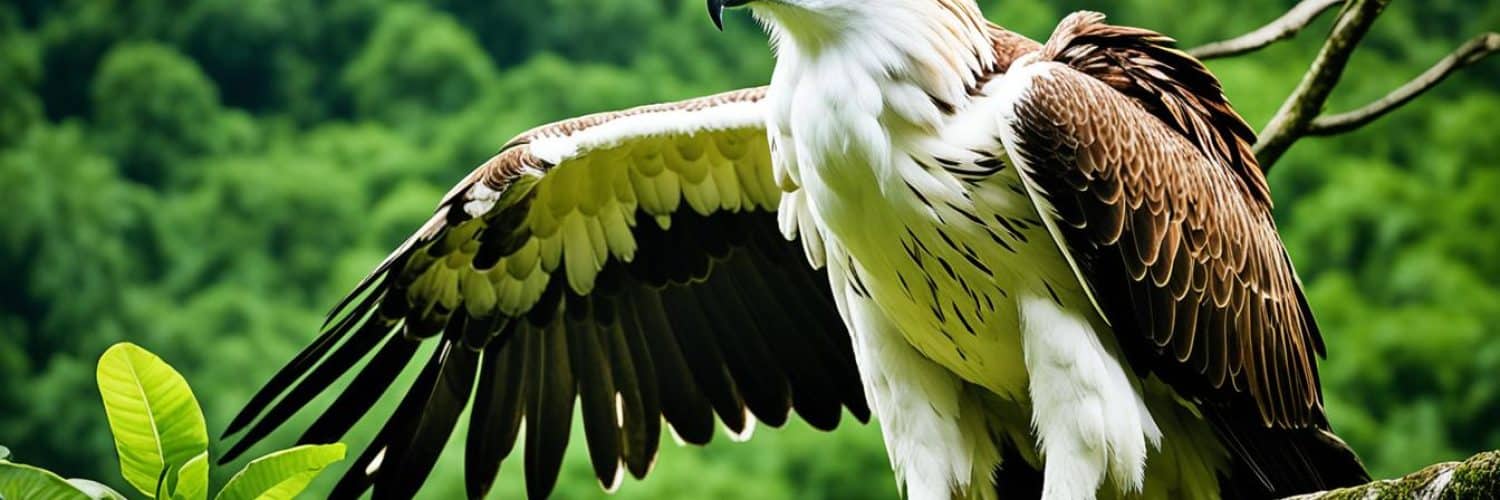
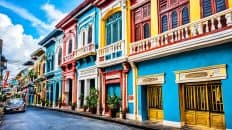

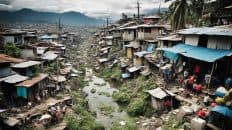










Add comment